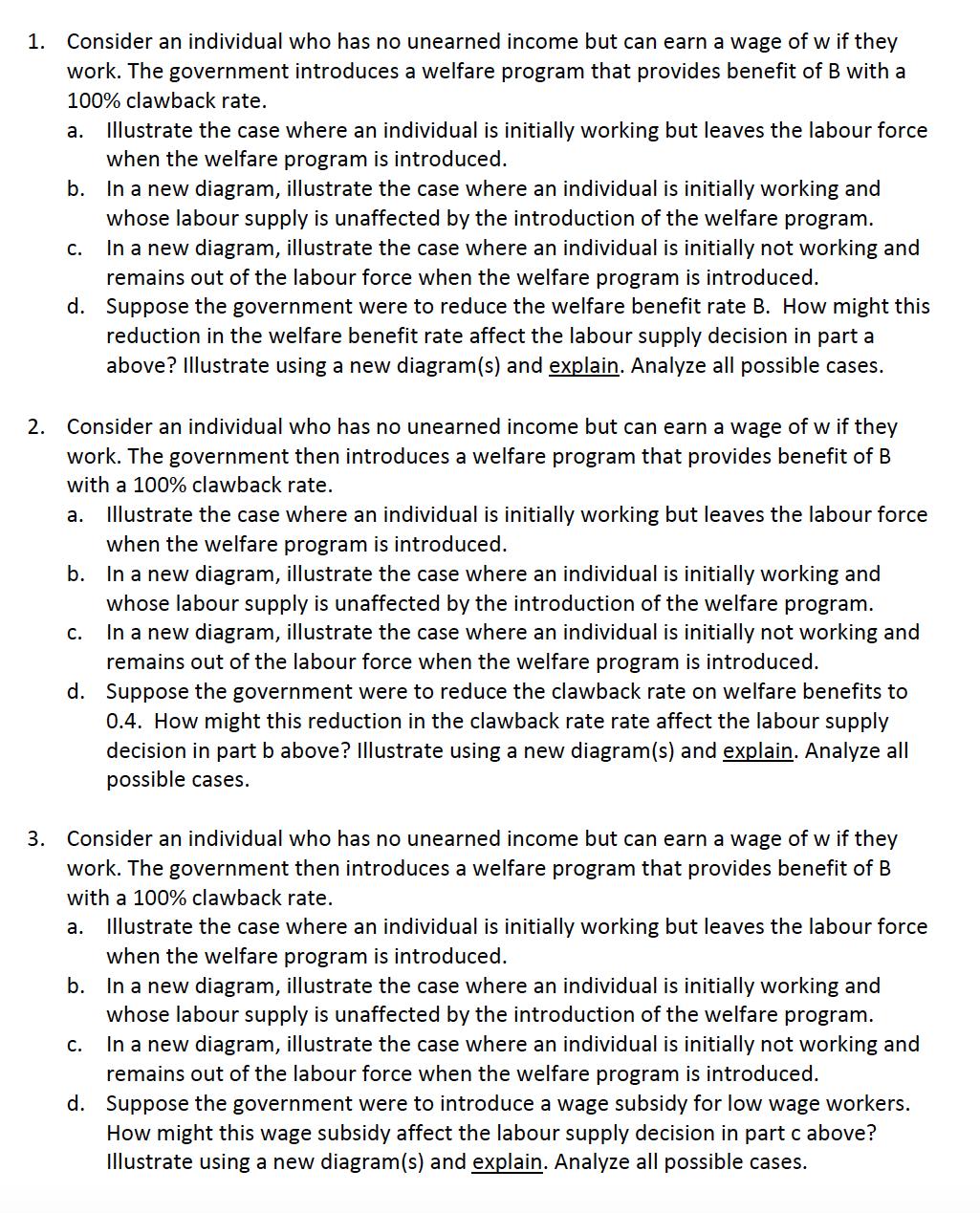Answered step by step
Verified Expert Solution
Question
1 Approved Answer
1. Consider an individual who has no unearned income but can earn a wage of w if they work. The government introduces a welfare

1. Consider an individual who has no unearned income but can earn a wage of w if they work. The government introduces a welfare program that provides benefit of B with a 100% clawback rate. a. Illustrate the case where an individual is initially working but leaves the labour force when the welfare program is introduced. b. In a new diagram, illustrate the case where an individual is initially working and whose labour supply is unaffected by the introduction of the welfare program. C. In a new diagram, illustrate the case where an individual is initially not working and remains out of the labour force when the welfare program is introduced. d. Suppose the government were to reduce the welfare benefit rate B. How might this reduction in the welfare benefit rate affect the labour supply decision in part a above? Illustrate using a new diagram(s) and explain. Analyze all possible cases. 2. Consider an individual who has no unearned income but can earn a wage of w if they work. The government then introduces a welfare program that provides benefit of B with a 100% clawback rate. a. Illustrate the case where an individual is initially working but leaves the labour force when the welfare program is introduced. b. In a new diagram, illustrate the case where an individual is initially working and whose labour supply is unaffected by the introduction of the welfare program. C. In a new diagram, illustrate the case where an individual is initially not working and remains out of the labour force when the welfare program is introduced. d. Suppose the government were to reduce the clawback rate on welfare benefits to 0.4. How might this reduction in the clawback rate rate affect the labour supply decision in part b above? Illustrate using a new diagram(s) and explain. Analyze all possible cases. 3. Consider an individual who has no unearned income but can earn a wage of w if they work. The government then introduces a welfare program that provides benefit of B with a 100% clawback rate. a. Illustrate the case where an individual is initially working but leaves the labour force when the welfare program is introduced. b. In a new diagram, illustrate the case where an individual is initially working and whose labour supply is unaffected by the introduction of the welfare program. C. In a new diagram, illustrate the case where an individual is initially not working and remains out of the labour force when the welfare program is introduced. d. Suppose the government were to introduce a wage subsidy for low wage workers. How might this wage subsidy affect the labour supply decision in part c above? Illustrate using a new diagram(s) and explain. Analyze all possible cases.
Step by Step Solution
There are 3 Steps involved in it
Step: 1

Get Instant Access to Expert-Tailored Solutions
See step-by-step solutions with expert insights and AI powered tools for academic success
Step: 2

Step: 3

Ace Your Homework with AI
Get the answers you need in no time with our AI-driven, step-by-step assistance
Get Started


